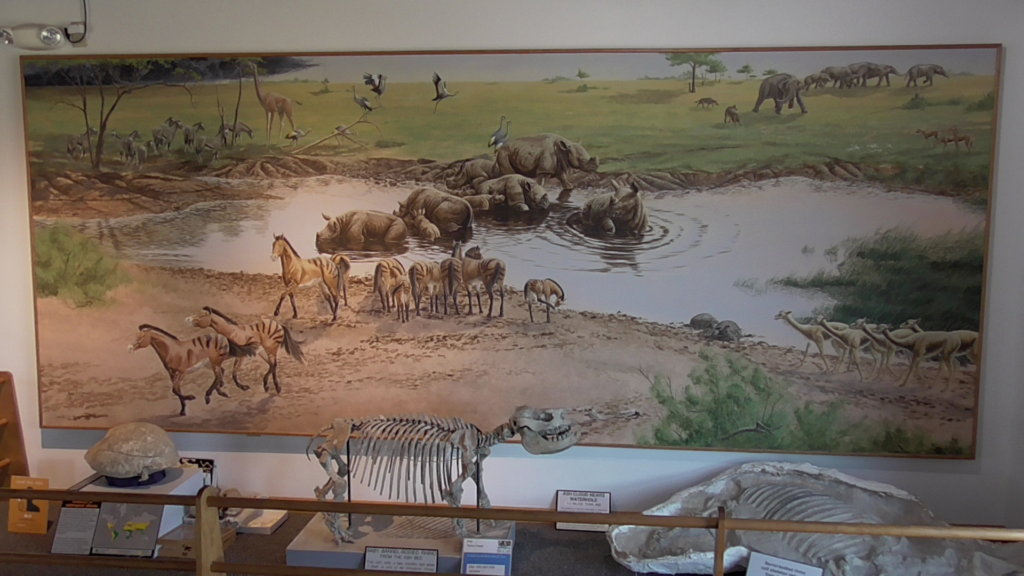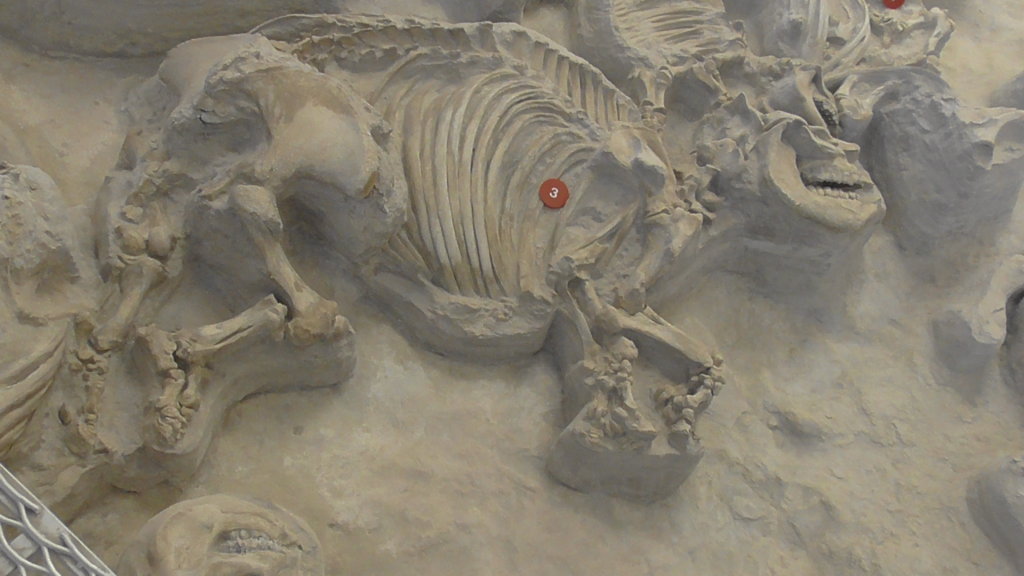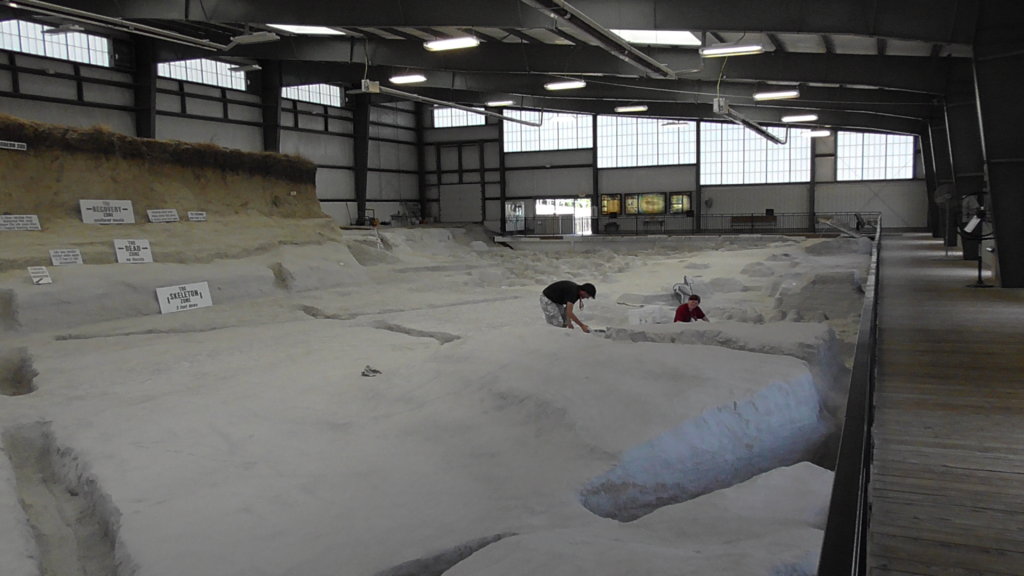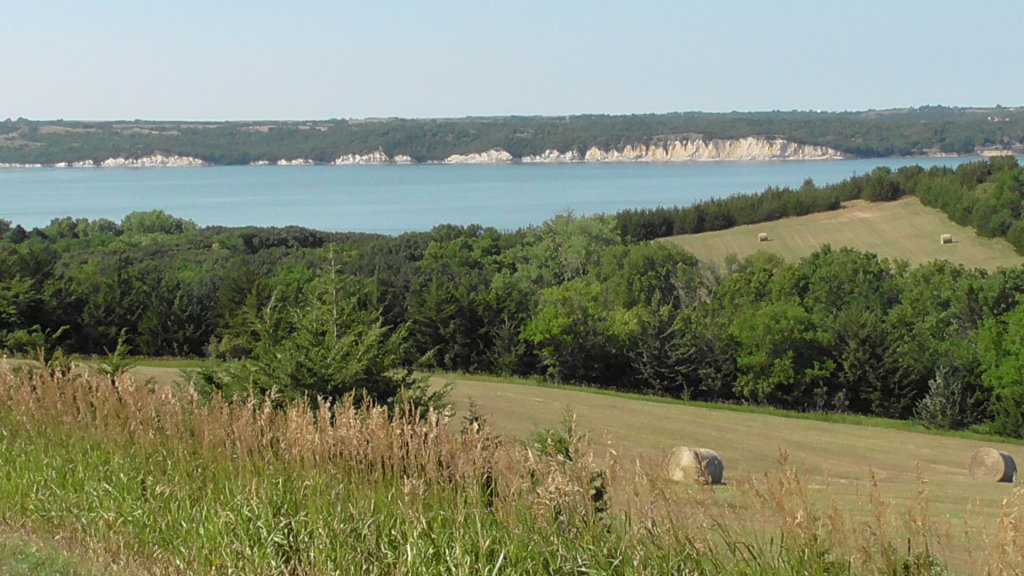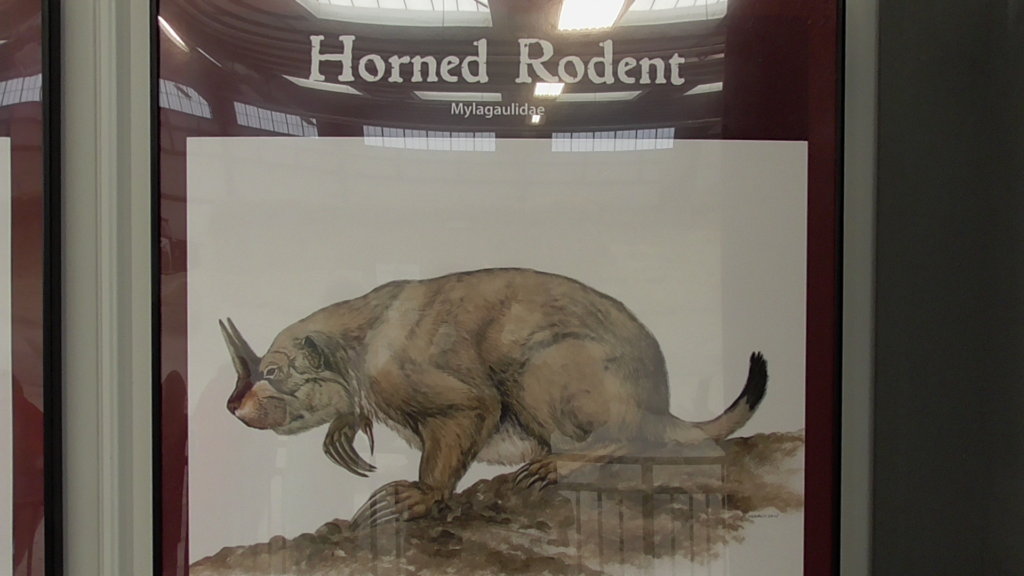Ashfall Fossil Beds State Park, Nebraska
About 12 million years ago, a volcano in southwest Idaho spread a blanket of ash over a very large area. One or two feet of this powdered glass covered the flat savannah-like grasslands of northeastern Nebraska.
Most of the animals which lived here survived the actual ashfall, but as they continued to graze on the ash covered grasses, their lungs began to fill up with the abrasive powder. Soon their lungs became severely damaged and they began to die.
The smaller animals died first (smaller lung capacities) and finally, after perhaps three to five weeks, the last of the rhinos perished. Their bodies were quickly covered by the blowing and drifting ash.
Undisturbed except by an occasional scavenging meat-eater, the skeletons of these animals are preserved in their death positions, complete with evidence of their last meals in their mouths and stomachs and their last steps preserved in the sandstone below. The site is still being excavated.
The fall of ash drifted downwind from the Bruneau-Jarbidge supervolcano eruption (in present-day southwest Idaho), nearly 1,000 miles west of the Ashfall site. As the hot spot is stationary and the North American continent moves west, the hot spot is now under Yellowstone. See August 7, 2016 on this web site for a diagram of the movement of this hot spot.
Preppers take note: Include dust masks and dust filters for your shelter.
I stayed at the Lewis and Clark State Recreation Area in Nebraska.
